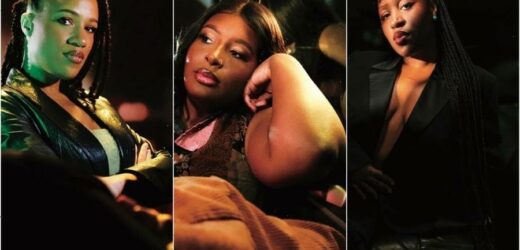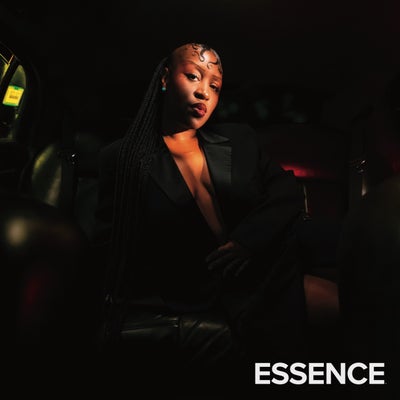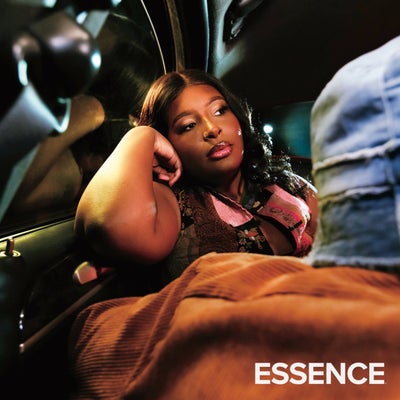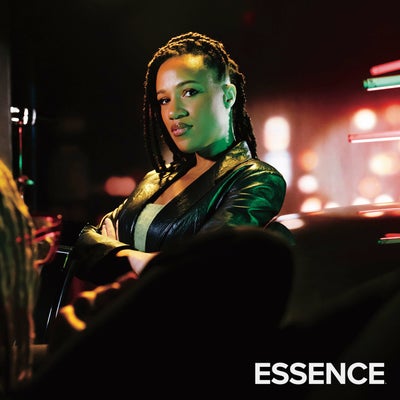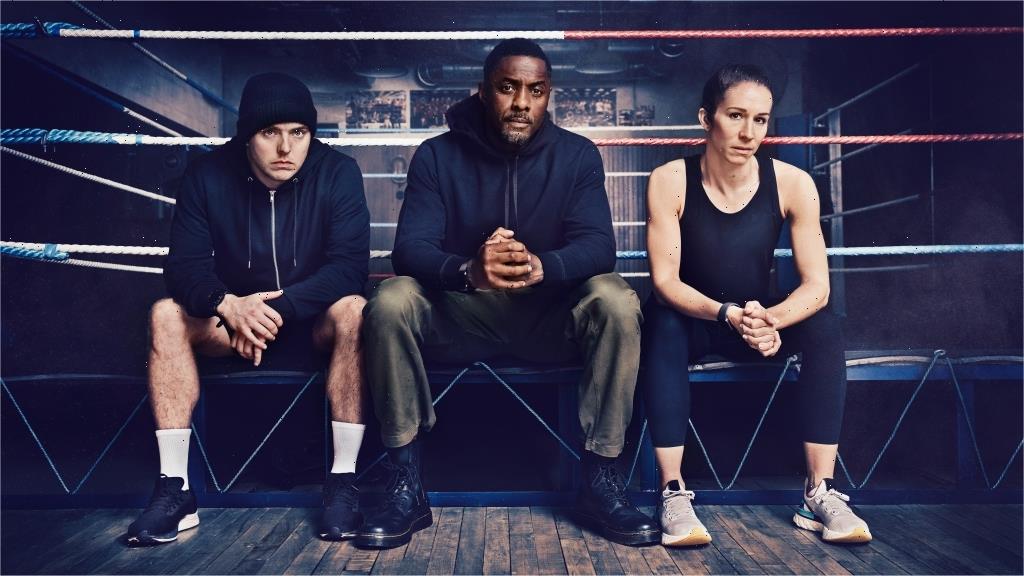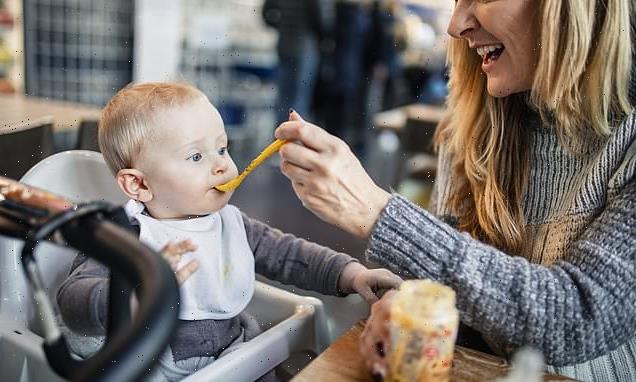While visual art is a ubiquitous and multifaceted feature of many Black experiences, the formal art world can be an esoteric, exclusionary space. It doesn’t always acknowledge the contributions of Black women artists, curators and gallerists or of the many more who work in various aspects of the industry.
In 2018, the Andrew W. Mellon Foundation, in partnership with the Association of Art Museum Directors, the American Alliance of Museums and Ithaka S+R, conducted its second comprehensive Art Museum Staff Demographic Survey. Their findings: The percentage of African- American curators increased from 2 percent in 2015 to a mere 4 percent in 2018. Only 20 percent of intellectual-leadership positions at museums were found to be held by people of color. Black women are often at the forefront of making and marketing Black art, in addition to marshaling it to the center from the margins. As many of them head to Miami Beach for Art Basel (December 1 to 3), we highlight five who are leading that charge.
Theresa Chromati
Considering whether artists are born or made, Theresa Chromati says, “You could totally walk away from your destiny and not show up for it.” But recognizing the call to be an artist as something that exists within and must be nourished, she has never imagined herself as anything else— not since her mother enrolled her in an art class at the Maryland Institute when she was in kindergarten.
Like her paintings, she considers her Guyanese-American heritage to be multifaceted; she inherited two Black traditions and their accompanying experiences from her parents. “Living in that duality really formed my identity,” she says, “and just thinking about my practice, it is very layered as a result.”
In her studio in Brooklyn, where she resides, Chromati says she’s often thinking about how to pair contradictions to find consensus between them. “I like to create an obstacle or challenge, and then find a harmony and union within that,” she says, describing how she approaches her work. “And I can say that has been similar to my experience growing up—being surrounded by opposing cultures.”
When making her art, Chromati doesn’t necessarily start with a particular audience in mind. That’s because she is first and foremost in conversation with herself. “I do like to add many different entry points to the work,” she says. “Ideally, I would love to have this intimate moment with Black women. However, many other people are going to be seeing and engaging with the work, and that’s completely fine.”
At this year’s Art Basel Miami, Chromati will show her paintings with Jessica Silverman Gallery. While the industry, along with its fairs and festivals, can be exclusionary, Chromati sees her presence as an opportunity for large numbers of people to see her work at once. Says the artist: “It’s a nice moment to be able to put out a thought and encourage people to keep looking for a deeper conversation.”
Alyse Archer-Coité
A senior leader in Apple’s design-research team by day, Alyse Archer-Coité spends much of the rest of her time focused on the upkeep of her wonderful 18th-century home in upstate New York: the Noxon House, which can be rented for private events and photo shoots. Archer-Coité is also an influential art collector. Having moved around a lot during her childhood, relocating from California to Texas with stops in between before finally attending college in New York, she says she developed her art sensibilities from this transient experience—primarily influenced by her mother, who raised Archer-Coité on her own.
“I grew up in the kind of household where everything we had, my mother had worked really hard for,” she says. “Everything was really beautiful and hand-selected—not all expensive, but all important to her.”
According to Archer-Coité, these early lessons of maintaining beautiful things extended to objects beyond those we might all agree on as art. After studying art history in school, she landed coveted positions in the field—working first at Sotheby’s, one of the world’s best-known brokers of collectibles, fine art and jewelry, and later at Phillips, a leading auction house in the market for the same items.
Her experiences in these settings were a stark contrast in values from the purpose and perception of art she had adopted in childhood. “My understanding of art was always from the perspective of love,” she explains. “It was about what has the strongest emotional connection to you. And then I went to Sotheby’s where, as you know, the emphasis is on sale price.”
While Archer-Coité did enjoy her time working among beautiful art pieces, she found the transactional nature of the business to be “heartbreaking”—and a “rude awakening” for one who was attentive to Black artists, who didn’t and don’t always get their due. In these early days of her career, she began to collect art more seriously. When she wanted an item that was more expensive than she could easily afford, she would consider how her mother would have responded. Her mother’s wisdom still guides and encourages her when she chooses an artwork.
“If you’re thinking about what it’s worth, don’t buy it,” Archer-Coité remembers her mother saying. “I think this is what truly gave me my start—when I first felt I had the permission to collect pieces that made me feel good, regardless of what they might be worth in the long run.”
Qualeasha Wood
For textile artist Qualeasha Wood, making art began when she was only 5 or 6 years old and growing up in New Jersey. Realizing she was talented, her parents encouraged her by buying all the supplies her heart desired—though even back then, she never colored within the lines.
She pressed pause on creating art in high school, as she and her family questioned whether she could make a career of it. But her love of the medium won out, as Wood eventually attended the Rhode Island School of Design (RISD) for her B.F.A. and later, the Cranbrook Academy of Art. Both institutions are among the most prestigious art schools in the country.
While at RISD, an incident with a professor in Wood’s Spatial Dynamics course provoked strong emotions in how she saw herself and her work. Wood recalls that she had begun to think of the social impact of her art, and she wanted to make a slave ship—to the dismay of her instructor. “We had a lot of disagreements, because basically he thought I was making his class too political,” she says. “And also because I don’t make the best 3-D work. So he told me to drop out, and I considered it.”
Fortunately, she didn’t drop out. Instead, she decided that her art must be a powerful force to have elicited such a strong reaction. She soon moved her practice toward textiles, relishing the idea of using everyday objects in her pieces and expounding on the political statement on Black life in her work. Landing in Brooklyn following her time at Cranbrook in Michigan, Wood began to feel as if she was again making art for a community of people with whom she identified and to whom she belonged. Last year’s “The [Black] Madonna- Whore Complex,” a subversive self-portrait made with cotton weave and glass seed beads, was compelling evidence of that.
At the time, she’d been listening to Kanye West’s “Bound 2” repeatedly; and she began to meditate on lyrics that she interpreted as juxtaposing Black women against his now-estranged wife, Kim Kardashian: the former bad, opinionated, undeserving, and the latter good, nonconfrontational, deserving. Woods wanted to rebel against this message. She recalls thinking, Where can Black women freely express themselves and not have it thrown back in their faces? And then she got busy with her textiles and beads, fashioning an answer to her own question.
Nicola Vassell
In 2021, more than a year into the pandemic, Nicola Vassell opened her eponymous contemporary gallery in the Chelsea neighborhood of Manhattan—New York City’s renowned art district. After decades of working in the art space as a dealer, curator and advisor, including for big-name celebrities such as Alicia Keys and her husband, Kasseem “Swizz Beatz” Dean, Vassell saw the gallery opening less as a lifelong dream come to fruition and more as an opportunity to respond to the political climate. The 2020 murder of George Floyd by police in Minnesota had instigated a societal reckoning throughout the nation that elevated a consciousness of Black life and Black culture. “People seemed to hunger for a greater sense of meaning around a conversation that had, frankly, already begun,” Vassell says. “So yeah, I think it just propelled me.”
The art juggernaut describes getting her start the old-fashioned way: with an apprenticeship that set her on a path to be educated by other art dealers and, later, to become one herself. She notes that these relationships, formed early in her career, helped her to grasp that understanding the history of the business side of the industry was as important as comprehending the history of art.
“Acquiring the wisdom that one gains from simply coming into the pot of knowledge that the greats before me were able to impart, helped a lot,” she says. The experiential knowledge she gained when she first started in the industry combined with her being born and raised in Kingston, Jamaica, an artistic society with visual cues that Vassell describes as “highly articulated” due to sparse resources. Given the emphasis on the arts in the education system of her hometown despite this scarcity, the gallerist had a strong introduction to the art world.
One of few Black women in her position today, Vassell doesn’t hesitate to express her particular perspective. Deciding on the weight of her aims in the space, from the commercial to the radical, is an important part of her considerations. But while she’s aware of the significance of her representation, she asserts that curating art the way she does is more about capacity than identity. “It’s really a psychological thing, much more than anything else,” she reflects. “One just has to have the wherewithal to do it.”
Ashley James, Ph.D.
In November 2019, Ashley James, Ph.D, became the Guggenheim’s first full-time Black curator in its contemporary-art department. Opening in April 2021 and running through September, her first exhibit, Off the Record, featured 13 artists in the collection; it was organized around the theme of how history is framed and documented. Given the heightened engagement with the realities of structural racism that the country was undergoing at the time, the New York exhibit was ripe for the moment.
Having received her doctorate from Yale University in English Literature and African American Studies, James has an artistic consciousness informed by, and inherently connected to, her Black Studies perspectives. “I always say that Black Studies is a lens, it’s a reflection, it’s a way that I see the world in general,” she says. “So this concept of the archive, the questioning of objectivity, this idea that history is often subjective on behalf of specific groups of people, to the detriment of marginalized subjects—those are all concepts that are key to Black Studies.”
The weight of being a first—especially given the themes of James’s inaugural exhibition, in which her interests coincided with an intense political moment in the aftermath of the death of George Floyd—could ordinarily complicate the motivations of someone in her position. But James’s artistic intentions are crystal clear. This is partially because she sees her work as a continuation of the efforts of all who document Black life, but it’s also because James sees her work outside of the context of any celebrity.
“I’m not famous—nobody’s checking for me,” she says, laughing. “I’m sitting in my library, reading my little books. Like, I don’t think about [my public profile] on a daily basis.”
James acknowledges, however, that when she initially got to the museum, given the conversation that surrounded her presence as a first, she did think about her role as a cultural representative. But ultimately, it’s the day-to-day work and the larger goals of her position that occupy her time. “At the core of curatorial work is selection, which by definition means exclusion,” she says. “Who are you putting on? And at what time? I think about that in terms of ‘firstness,’ because I try to be honest and deliberate at the same time.”
Source: Read Full Article
